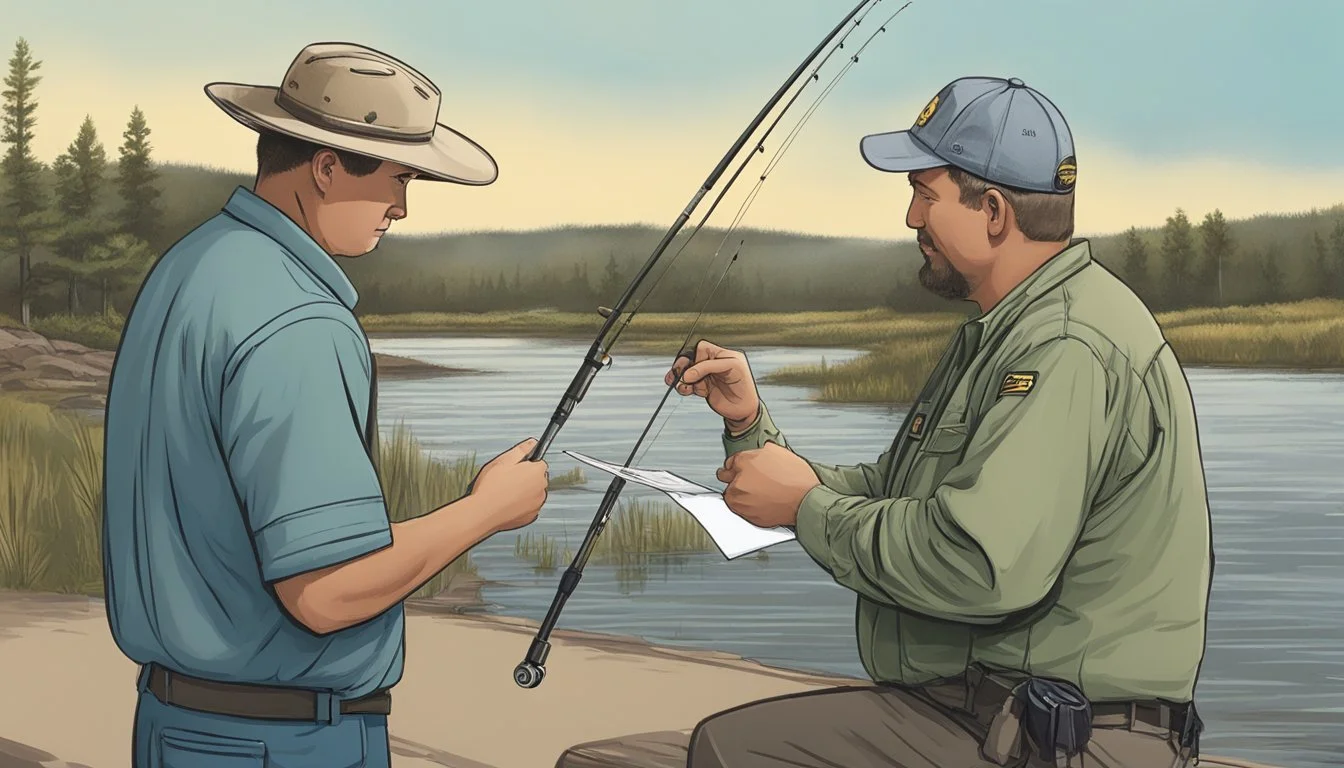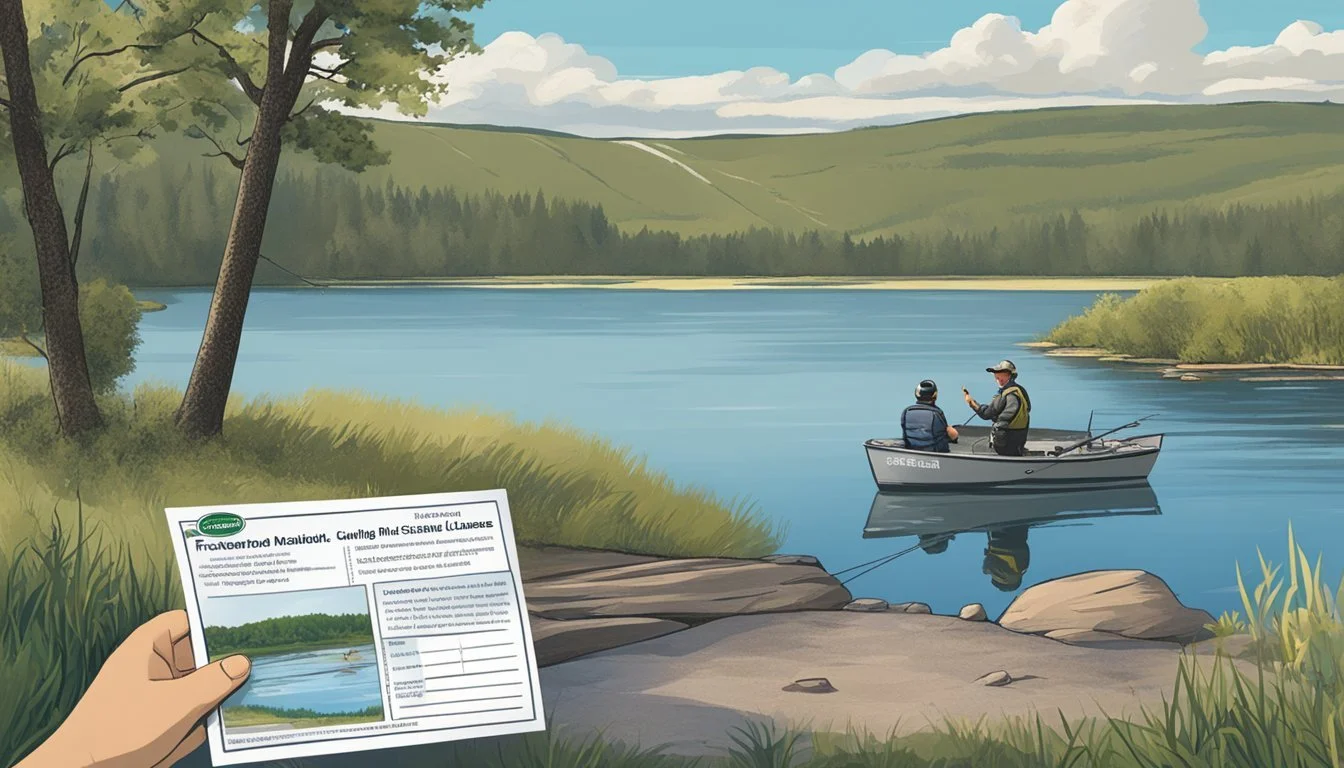How to Get a South Dakota Freshwater Fishing License
Your Simple Guide
Securing a freshwater fishing license is a critical step for anglers in South Dakota and serves as a fundamental support mechanism for fish (What wine goes well with fish?) population management and conservation efforts. In South Dakota, residents and non-residents alike are required to obtain a fishing license before they can engage in the activity, ensuring that fishing regulations are adhered to and fish habitats are preserved. Licenses are available for purchase through various channels, including online platforms and authorized agent locations across the state, making the process accessible and convenient.
The South Dakota Game, Fish and Parks department provides a variety of license options to cater to different fishing needs. Whether one is planning a single day of fishing or looking for a season-long pass, there is an array of licenses to choose from. In addition, certain groups, like the youth under 18 and seniors aged 65 and above, are offered licenses at adjusted rates or may even be exempt from the requirement, thereby promoting a culture of fishing across generational lines.
Purchasing a fishing license not only grants the right to fish in South Dakota's freshwater bodies but also contributes directly to conservation initiatives. License fees are a source of funding for maintaining the aquatic ecosystems and managing the fish species within them. By participating in this regulated activity, anglers are upholding the state's dedication to preserving the natural environment for future generations.
Understanding the Requirements
Before attempting to purchase a South Dakota freshwater fishing license, individuals should be aware of the age requirements, the distinction between resident and non-resident applicants, and the range of licenses available.
Age Requirements
In South Dakota, different age groups are subject to specific licensing rules. Residents and non-residents under the age of 16 are not required to have a fishing license. However, seniors, classified as residents age 65 and over, are eligible for a Senior Fishing License or a Senior Combination License, which includes fishing and small game hunting.
Differences Between Residents and Non-Residents
Defining residency status is crucial as it determines the type of license for which an individual is eligible. A resident is someone who has lived in South Dakota for at least 90 consecutive days prior to applying for a license. Non-residents, on the other hand, can apply for various nonresident licenses. To purchase a resident fishing license, one must provide proof of residency such as a South Dakota driver's license.
Resident licenses include the annual fishing license and combination licenses that may encompass hunting.
Non-resident licenses offer more short-term options like the 1-day or 3-day fishing licenses, which are ideal for tourists or travelers.
Identifying Available Licenses
A variety of fishing licenses cater to different needs. Here is a quick guide:
Annual Fishing License: Available for both residents and non-residents for year-long fishing.
Setline License: For residents only, allowing the use of a setline.
1-Day & 3-Day Fishing Licenses: For non-residents who plan on fishing for a shorter duration.
Resident Combination License: Includes state hunting privileges alongside fishing.
Nursing Facility Group License: An option for qualifying resident groups, reflecting South Dakota's inclusive approach.
Selecting the appropriate license requires careful consideration of one’s residency status and intended fishing duration in South Dakota's waters.
How to Apply for a Fishing License
In South Dakota, individuals looking to fish in freshwater bodies can apply for a fishing license through several convenient methods, each with its own steps and requirements. Prospective anglers can apply online, in person at various locations, or by mail. It is essential for applicants to have their personal information, payment method, and, if necessary, login credentials ready before starting the application process.
Online Application
Applicants can obtain a South Dakota freshwater fishing license quickly and efficiently by applying online. They must:
Navigate to the South Dakota Game, Fish, and Parks website or the Go Outdoors South Dakota platform.
Log in or create an account, providing personal information such as name, date of birth, and address.
Select the type of fishing license they wish to purchase.
Complete the payment using a credit or debit card.
Online services are available 24/7, offering a straightforward way to apply for and receive a license promptly.
In-Person Application
For those who prefer to apply for their fishing license in person, South Dakota provides several locations:
Agent locations: Various retail stores across the state.
County treasurer offices: Offices located within county jurisdictions.
When applying in person, applicants should bring identification and be prepared to supply personal information to the authorized agent. Payment can usually be made by cash, check, or card, depending on the location.
By Mail
Applying by mail is an alternative for anglers who are not pressed for time and prefer a traditional method. They should:
Obtain the necessary application form from the South Dakota Game, Fish, and Parks website or request one by phone.
Fill out the form with the required details, including their address and the type of license they wish to purchase.
Mail the completed application with the appropriate payment to the specified address.
It is important to allow sufficient time for processing and postage when applying by mail to ensure the license arrives before any planned fishing trips.
Understanding the Cost
Securing a freshwater fishing license in South Dakota involves understanding various costs associated with different types of licenses, including those for residents and non-residents, as well as discounts and specialty options.
Resident Fishing License Costs
Annual License: For residents, an annual fishing license costs $28. This license is required for anyone who has established residency in South Dakota for at least 90 consecutive days before the license purchase.
Senior Fishing License: Residents aged 65 and older have access to a reduced fee fishing license, promoting affordability for senior anglers.
Non-Resident Fishing License Costs
Annual Nonresident License: For those who have not established residency, the annual nonresident fishing license fee is $67. This allows non-residents to fish for the entire season across South Dakota waters.
One-Day Fishing License: Non-residents may opt for a one-day license if their visit is brief, ensuring they can enjoy the state's fishing opportunities even during short stays.
Discounts and Special Licenses
South Dakota acknowledges the service of veterans and disabled individuals by offering specific licenses at discounted rates or possibly at no cost, depending on qualifying factors. Moreover, a nursing facility group license option is available, fostering outdoor recreational activities for residents under institutional care.
Combination and Specialty Licenses
Combination Licenses: Fishermen in South Dakota can purchase combination licenses that include both fishing and hunting privileges, offering a convenient package for outdoor enthusiasts.
Specialty Licenses: Some anglers may require specialized licenses such as a setline license or hoop net license, which carry their own set fees and regulations to cater to different fishing methods.
Fishing Regulations and Conservation
South Dakota's freshwater fishing regulations are designed to ensure sustainable fish populations while offering anglers the opportunity to enjoy the state's aquatic resources. These regulations pertain to species-specific rules, licensing, and the conservation efforts in place for affected lakes and rivers.
Species Regulations and Size Limits
Fishing in South Dakota is subject to regulations that stipulate size limits and daily possession limits for various species to maintain healthy fish populations. For instance, Lake Sharpe and Lake Alvin are popular fishing destinations where anglers must adhere to the established size and daily limits, particularly for game fish like smallmouth bass.
License-Specific Regulations
In South Dakota, different types of licenses, such as the setline license or the hoop net license, come with specific regulations. A setline license, for example, allows the use of a line with no more than five hooks to catch fish, whereas hoop net fishing is regulated by distinct laws that dictate the permissible methods and gear.
Setline License: A maximum of five hooks per line.
Hoop Net License: Usage according to specific laws in designated areas.
Affected Lakes and Rivers
The waters of South Dakota, including Lake Sharpe and Lake Alvin, are governed by these fishing regulations. Anglers should obtain information from local bait shops and official resources to ensure they comply with the latest rules and advisories for these bodies of water.
Conservation and Sustainability Efforts
Conservation efforts in South Dakota are essential to safeguarding the ecosystem for future generations. Measures such as habitat restoration, stocking programs, and the implementation of stringent fishing regulations are instrumental components of the state's strategy to enhance the ecological balance and sustainability of its waterways.
Additional Privileges and Regulations
South Dakota offers a variety of licenses tailored to the needs of anglers and hunters, with specific regulations to maintain sustainable fishing practices. These licenses and regulations are designed to protect both the fish populations and the privileges of those enjoying the natural resources.
Combination Licenses for Hunting and Fishing
South Dakota provides Resident Combination Licenses which allow individuals to partake in both hunting small game and fishing activities. This license is convenient for residents aged 18 or over who are interested in multiple outdoor activities.
Fee: Varies by license type
License Privileges: Fishing and small game hunting
Special Regulations for Different Fish Species
Anglers must abide by specific regulations regarding size limits and bag limits to conserve fish populations. For instance, trout may have different restrictions compared to other fish species, and these can vary by location and season.
Trout Regulations: May include special stamp requirements
Bag Limits: Dictate the maximum number of fish that can be taken per day
Permissions for Different Fishing Techniques
Special licenses are needed for those wishing to use particular fishing techniques like Hoop Net, Trap, and Setline. These methods are regulated to assure minimal impact on aquatic life.
Setline Permission: Available for a fee of $5
Hoop Net and Trap: Each require a license, sold for $10 each
Anglers must purchase appropriate licenses and adhere to the regulations for each fishing technique. Tackle shops and bait shops often provide guidance and the necessary fishing gear while also informing patrons about current regulations.
Helpful Resources and Information
When seeking to obtain a South Dakota freshwater fishing license, anglers can benefit from a wealth of resources designed to enhance their fishing experience. These resources offer guidance on regulations, provide educational content, and support sustainable fishing practices.
Access to Fishing Guides and Newsletters
South Dakota Game, Fish and Parks (GFP) provides comprehensive fishing guides that cover state fishing regulations, species identification, and fishing forecasts. Anglers can also subscribe to newsletters for the latest updates and fishing tips. This information can be crucial for both seasoned and novice fishermen looking to stay informed on best practices and seasonal changes.
To subscribe to a newsletter: Visit the GFP website.
To access fishing guides: Download them from the GFP resources section.
Boating and Fishing Support Resources
For those combining boating with their angling activities, it's important to have access to reliable boating resources. The GFP website lists safety regulations, boating education programs, and detailed maps of waterways. Knowing where to find help regarding boat registrations, safety course requirements, and water conditions ensures a well-prepared fishing trip.
For boating safety courses: Check the GFP's available classes and requirements.
For navigational maps: Look for downloadable maps on the GFP online portal.
Fishing Etiquette and Best Practices
Understanding and following fishing etiquette is critical for preserving South Dakota's aquatic ecosystems. The GFP outlines expectations such as catch and release practices, properly disposing of waste, and respecting other anglers' space. Adhering to these best practices not only contributes to a better fishing environment but also fosters a positive community among anglers.
For a detailed list of fishing etiquette: Review the GFP's 'Do’s and Don'ts' of fishing.
For conservation tips: GFP's fishing guides include information on sustainable angling.
Post-Purchase Requirements
Once an individual has successfully purchased their South Dakota freshwater fishing license, they are required to adhere to specific post-purchase requirements. These requirements ensure the license remains valid and that the individual is in compliance with state fishing regulations.
Validating and Displaying Licenses
After acquisition, an angler must sign their fishing license to validate it. It is crucial that the license is readily available and displayed upon request by a game warden during their fishing trip. Fishermen should carry their license physically or have a digital copy accessible on a mobile device.
Reporting and Compliance
Anglers are obligated to follow South Dakota fishing laws, including size and catch limits. They must also report any tagged fish catches as these are part of conservation efforts. Compliance with these laws helps maintain the balance of the state's freshwater ecosystems, ensuring populations of game fish like pheasant, grouse, partridge, quail, cottontail rabbit, and tree squirrel remain healthy for future fishing seasons.
Understanding Game Fish Seasons
A valid fishing license does not grant unlimited fishing opportunities. Fishermen must be aware of and respect the specific seasons for game fish. The South Dakota Game, Fish and Parks Department sets these dates and regulations, which are subject to change annually. Deviating from these dates can result in penalties, so fishermen should always check the current season dates before planning their fishing trips.









